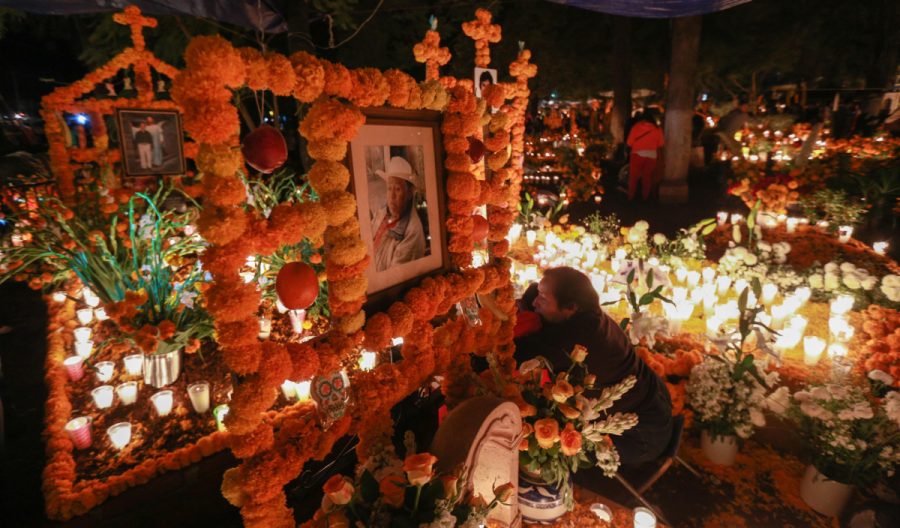How Different Countries Honor Day of The Dead
November 3, 2022
The Day of the Dead or Día de los Muertos is a Mexican holiday where families welcome back the souls of their deceased loved ones for a brief reunion. Families usually create offerings to honor their loved ones who have passed. These offerings are believed to encourage visits land of the dead and these souls hear their prayers, smell their foods, and join in on the honor. This year, Day of the Dead is November 1st through November 2nd. Día de los Angelitos (Day of the Little Angels) starts the holiday at midnight on November 1st. This is where the spirits are believed to be reunited with their families for 24 hours. During this families build an altar, with the deceased child’s favorite snacks, candles, toy, and photographs to encourage their child to come back. At midnight on November 2nd starts Día de los Difuntos (Day of the Adults). Unlike the children, the adults have a more mature honor with tequila, mezcal, and jars of Atole. The families will also play games together and honor their deceased loved ones. Then Día de los Muertos officially starts. Cemetery visits are quite common on the last day. Families will go to their grave sites and decorate the grave with Marigold flowers, gifts, and sugar skulls with their names on them. Día de los Muertos is celebrated differently around the world today, with many original ways of honor their deceased loved ones. In some cultures, it is a day of festivities, while others it’s for honoring and mourning.
In The Philippines, celebrating Undás is the time of the year that is devoted to family. They honor their deceased loved ones by feasting together. For Filipinos, who no longer live near their families, they travel back home to celebrate with their loved ones. They use this day to tidy up cemeteries, place flowers on graves, and light candles to honor their deceased loved ones.
In Guatemala, they have the beautiful festival called Festival de Barriletes Gigantes in Sumpango. During this festival, locals gather to fly giant, extravagant, multicolored kites. Many of these kites are painted by hand throughout the year. This tradition started over 3,000 years ago when Indigenous Guatemalans believed that they could use kites to communicate with their deceased loved ones. At the festival, locals eat fiambre, which is a traditional Guatemalan salad made specifically for the holiday that has dozens of ingredients, which are all selected to honor the dead.
In Haiti, Fèt Gede is celebrated with altars, eves which are ground drawings made to attract the gede, special food and drink offerings, and sacred dances and polyrhythmic drumming. All of the rituals performed during a gede fest is geared to attracting spirts of people who died to celebrate with their living descendants. There are beautiful veve tracings, elaborately constructed altars, specially prepared foods for the gede, music, drumming, and dance performances. The sound and the fast movements of the dancers are used to further attractors for them to manifest themselves into the land of the living. Many Vodou believers visit cemeteries to pay their respects to their deceased loved ones, and to the spirits of death as well.
In Brazil, Finados is meant to honor those loved one who have died. Many Brazilians will visit the cemeteries where they will leave flowers and light candles for their deceased loved ones. Some people may also sing songs or hymns for them. Others may hold cookouts and invite friends and family over for gathering. Unlike in Mexico, which is known for many Day of the Dead celebrations, Finados is not celebrated as a party, but instead to remember and celebrate the life of loved ones.
Overall, there are numerous ways to remember, honor, and celebrate this holiday. Feliz Día de los Muertos!

